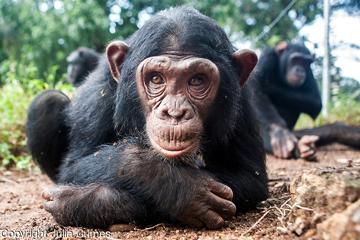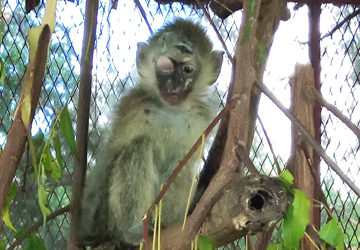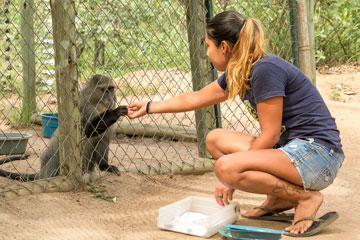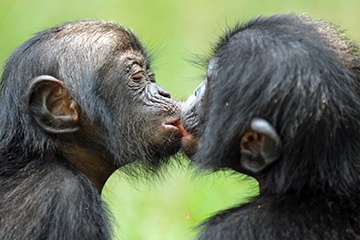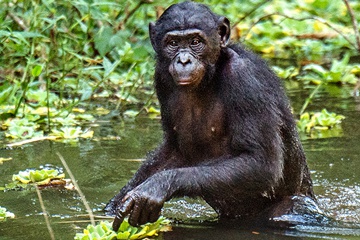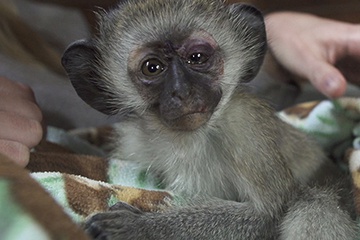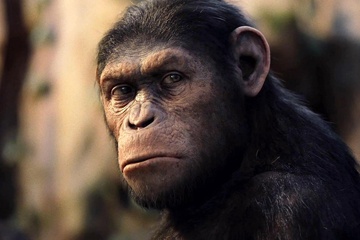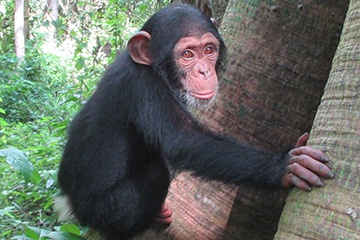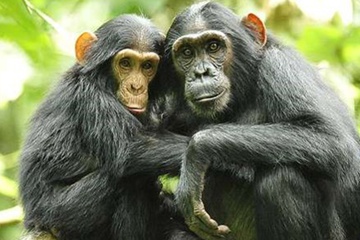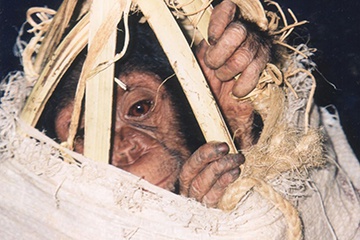How Can You Reduce Climate Change by Helping Protect Great Apes?
New Data Show that Climate Change Is Causing Massive Tree Die-Offs in Africa
By Natasha Tworoski
It’s hard to find a place on the planet where scientific evidence isn’t showing global climate change taking a drastic toll on wildlife and ecosystems. Tragically, this includes the lush forests of Africa and its diverse wildlife.
Africa’s Congo Basin is the second largest rainforest in the world, reaching across six countries, and is home to the greatest number of primates, mammals, birds, fish and swallowtail butterflies of any region of Africa. It also hosts Africa’s second longest river, the Congo River, an important source of water for wildlife and people. Like so many wild places, the Congo Basin is an indicator of the dramatic changes our planet is now undergoing.
NASA satellite imaging and the highly sensitive Enhanced Vegetation Index can reveal the amount of greenness, an indicator of forest health. While the loss of vegetation, referred to as “browning,” has been occurring in the Amazon at a rapid rate, imaging recorded in 2014 showed browning in the Congo Basin is now a major concern there as well. Increasing land surface temperatures and decreased cloudiness are causing large scale tree mortality, which in turn exposes more of the Earth’s surface to the effects of rising temperatures, increasing the rate of climate change.
With deforestation already a huge threat to wildlife in the Congo Basin, this evidence that the remaining forest is deteriorating due to climate change is disheartening news.
A new horrifying threat has just been published this week in the highly respected peer-reviewed journal Nature. Satellite imaging of the Congo Basin’s Cuvette Centrale peat lands, which exist across the Republic of Congo and the Democratic Republic of Congo, have been found to hold 30 billion tons of carbon. This amount is equivalent to 3 years of global emissions. While peat lands only cover 3% of the planet’s surface, they are responsible for one third of soil carbon. The frightening problem comes when peat lands are dug up, usually to create new farm land, and the carbon is released from the earth and into the atmosphere. While the Cuvette Centrale peat lands are not yet being destroyed, the rapidly growing trend of palm oil plantations in Africa mean this could be a very real risk in the near future.
Fortunately, the Cuvette Centrale peat lands are located in a region that is highly inaccessible, which is likely the reason they have not been disturbed to date. The peat lands also have a champion in their corner – this area is home to one of the highest densities of gorillas in Africa.
By protecting one of our closest relatives and their habitat, we are also protecting all of us from the devastating effects of climate change.
Please donate today to help protect African primates and their habitat – before it’s too late.
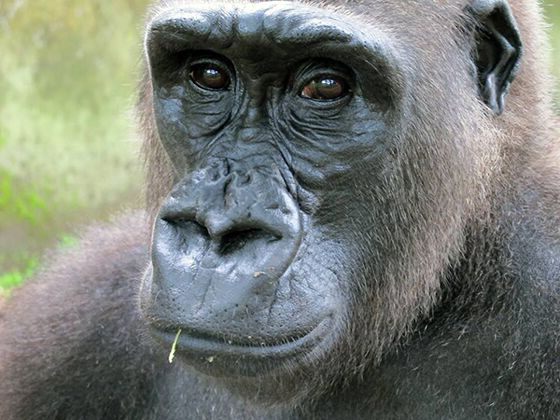
Protecting an area with the largest concentration of gorillas in Africa also prevents disruption of peat lands, a major risk for release of carbon into the atmosphere.
Next Posts
Ngamba Island Chimpanzee Sanctuary Works to Save Chimps and Improve Communities
This sanctuary decided it wasn’t enough to just rescue victims of human-wildlife conflict, but that it was time to end the conflict.
A Story of Hope: Likoni’s Journey
A young vervet monkey on the brink of death makes a miraculous recovery thanks to one sanctuary’s fast action.
Is Volunteering Abroad with Primates for You?
Volunteering in another country with wildlife can be a life-changing experience, if you’re up for the challenge.
Bonobos and Chimpanzees, Which Ape is Which?
Bonobos and chimpanzees offer great insights to human evolution, but they are often confused for each other.
Against All Odds, Fourteen Bonobos Find Their Way Home!
Returning primates to the wild can be a challenge for many PASA members.
Vervet Emergency!
When young vervet monkeys need medical help, the staff at the Vervet Monkey Foundation are always at the ready.
Why Primates Have Never Belonged in the Entertainment Industry
The entertainment industry harms primates in ways beyond the horrific living conditions and abuse.
What Does it Take to Create a Chimpanzee Sanctuary from Scratch?
An on-the-ground look at the founding of a new chimpanzee sanctuary.
Adventuring Responsibly: How to Help (and Not Harm) Wildlife While Traveling
A go-to guide on responsible tourism.
Political Instability Affects People and Primates Alike
Pressure caused by in-country fighting has large impacts on communities, but what about the animals caught in the crosshairs?

